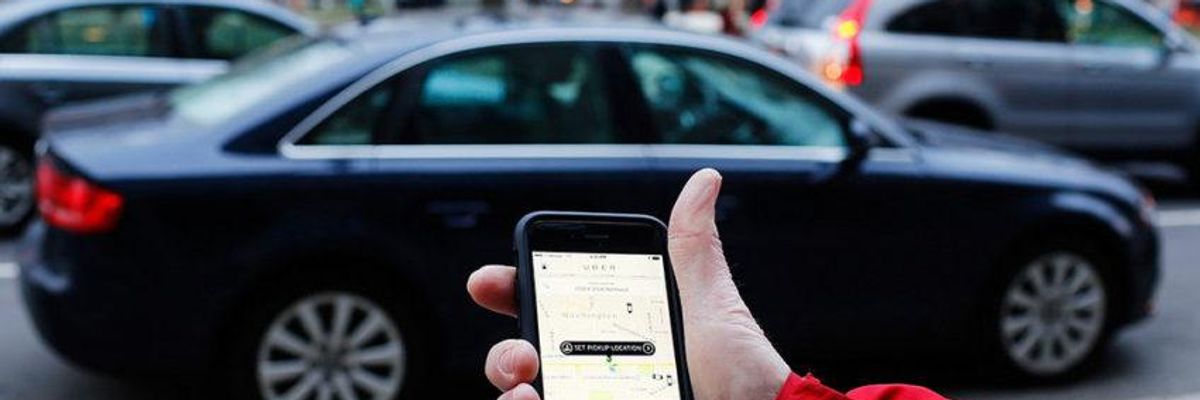If you’ve taken an Uber ride recently, you’ve probably noticed it cost a lot more than a few years ago. Why is that? We conducted the largest-ever study of rideshare fares to find out, and discovered a story of gaslighting and corporate greed that squeezes rideshare drivers and riders alike, while funneling our money to banks and billionaires.
This month, Minneapolis passed an ordinance requiring rideshare corporations to pay drivers at least $1.40 per mile and 51 cents per minute. In a desperate attempt to block the pay floor, Uber and Lyft are threatening to leave the city, claiming that such a requirement would make rides too expensive for residents. This argument—that higher driver pay would force big fare hikes—is one of Uber and Lyft’s favorite scare tactics. As drivers across the country have protested poverty wages and organized for better pay, the rideshare giants have trotted out this line again and again—in Connecticut, Chicago, New York, and Seattle, to name just a few.
We decided to test that claim. Our team analyzed over a billion rideshare trips, comparing four years of data in Chicago and New York. These are two of the biggest rideshare markets in the U.S. and the only two American cities that make rideshare corporations report detailed trip data. In New York City, drivers overcame Uber’s fearmongering and won a minimum pay standard that took effect in February 2019. In Chicago, drivers are organizing but haven’t yet won pay protections.
Letting rideshare corporations bully and bamboozle to get their way harms all of us.
If Uber’s argument was true, fares should have gone up more in New York after the pay standard took effect. In fact, the opposite happened. Over the four years we studied, Uber and Lyft raised fares by 54% in Chicago, where drivers have no pay protections. In New York, they only increased fares by 36%. The reality just doesn’t match Uber’s scare tactics.
So if fares went up more in the city without a pay floor, what’s causing these big price hikes? We looked at many possible explanations, but only one fits the data: pressure from Wall Street.
For years, Uber used money from the likes of Goldman Sachs, BlackRock, and Jeff Bezos to subsidize cheap rides and decent pay. Now that Uber dominates the market, its investors are demanding their cut. As the corporation has faced increasing calls to turn a profit, it has jacked up fares and cut driver pay.
The strategy is working: just last month, Uber reported an annual profit for the first time ever—and promptly announced plans to give $7 billion to shareholders.
Letting rideshare corporations bully and bamboozle to get their way harms all of us. Riders are forced to pay more to get around, while drivers have to work long hours and still struggle to cover the bills. Falsely claiming that wage protections will drive up fares seems to be a tactic to pit drivers against passengers and obscure this massive transfer of wealth to Wall Street.
The good news is that communities are no longer falling for Uber’s scare tactics. In Minneapolis, the city council stood with the city’s mostly Black and immigrant drivers instead of giving in to Uber’s bullying. And in Chicago, drivers are organizing for an ordinance setting a living wage and protections against unfair deactivations—and have the support of a majority of the city council.
These fights are far from over (already Uber and Lyft are turning to the Minnesota state legislature, which could pass a law banning the Minneapolis ordinance from going into effect). But when drivers and communities stand together, these cities are showing we can say no to Uber’s bullying, ensure drivers are paid enough to provide for their families, and shape a transportation system that serves us instead of Wall Street.
